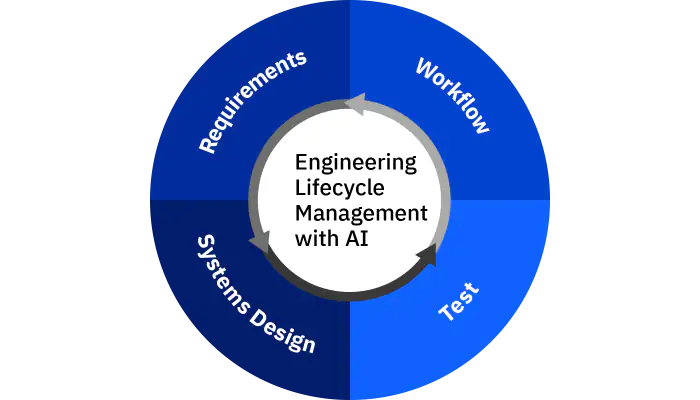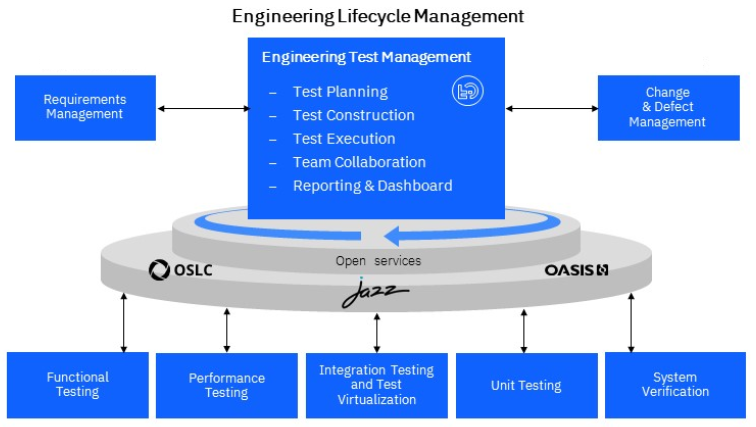IBM Engineering Test Management
IBM Engineering Test Management (ETM)

ETM is a comprehensive solution for managing the testing activities throughout the software development lifecycle. It supports various testing methodologies, facilitates collaboration, and integrates seamlessly with other tools in the IBM Engineering Lifecycle Management suite. ETM provides capabilities for test planning, test case design, test execution, and defect tracking, all within a single platform. It is designed to support a wide range of testing activities, from manual testing to automated testing, and is suitable for projects of all sizes. ETM is designed to improve the efficiency and effectiveness of your testing processes, helping you deliver high-quality software.
Key Functionalities
Test Planning and Design:
- Test Plans: Create detailed test plans that outline the scope, objectives, resources, schedule, and deliverables for testing activities.
- Test Cases: Design and manage test cases with detailed steps and expected results to ensure comprehensive testing coverage.
Test Execution:
- Manual Testing: Execute manual tests and record results directly in the tool.
- Automated Testing: Integrate with various test automation tools to execute automated test scripts and capture results.
Defect Management:
- Defect Tracking: Log and track defects discovered during testing, assign them to team members, and monitor their resolution.
- Integration with Issue Tracking Systems: Seamlessly integrate with popular issue tracking systems like JIRA to synchronize defect information.
Traceability and Coverage:
- End-to-End Traceability: Maintain traceability between requirements, test cases, test executions, and defects to ensure that all requirements are tested and validated.
- Coverage Analysis: Perform coverage analysis to identify gaps in testing and ensure that all critical areas are covered.
Collaboration and Communication:
- Team Collaboration: Facilitate collaboration among team members through shared workspaces, discussions, and notifications.
- Stakeholder Reporting: Generate comprehensive reports and dashboards to keep stakeholders informed about testing progress and quality status.
Integration and Automation:
- Tool Integrations: Integrate with other tools in the IBM Engineering Lifecycle Management suite, such as IBM Engineering Workflow Management (EWM) and IBM Engineering Requirements Management DOORS Next.
- Automated Workflows: Automate test execution and other workflows to streamline testing processes and improve efficiency.
Reporting and Analytics:
- Advanced Reporting: Create detailed reports on test execution, defect status, and overall quality metrics to support decision-making.
- Real-Time Dashboards: Use real-time dashboards to monitor test progress and quickly identify issues.
Compliance and Governance:
- Regulatory Compliance: Ensure compliance with industry standards and regulatory requirements through built-in features for audit trails and documentation.
- Process Governance: Implement and enforce testing processes and best practices to maintain high-quality standards.
Key Benefits
- Enhanced Test Efficiency: Streamline test planning, execution, and reporting to improve overall efficiency.
- Improved Collaboration: Enhance team collaboration and communication, leading to more effective testing and quicker issue resolution.
- Comprehensive Test Coverage: Ensure thorough testing by maintaining traceability and conducting coverage analysis.
- Real-Time Visibility: Gain real-time insights into testing progress and quality, enabling better decision-making.
- Scalability: Scale testing efforts to meet the needs of projects of all sizes, from small teams to large enterprises.
- Regulatory Compliance: Simplify compliance with industry standards and regulatory requirements.

